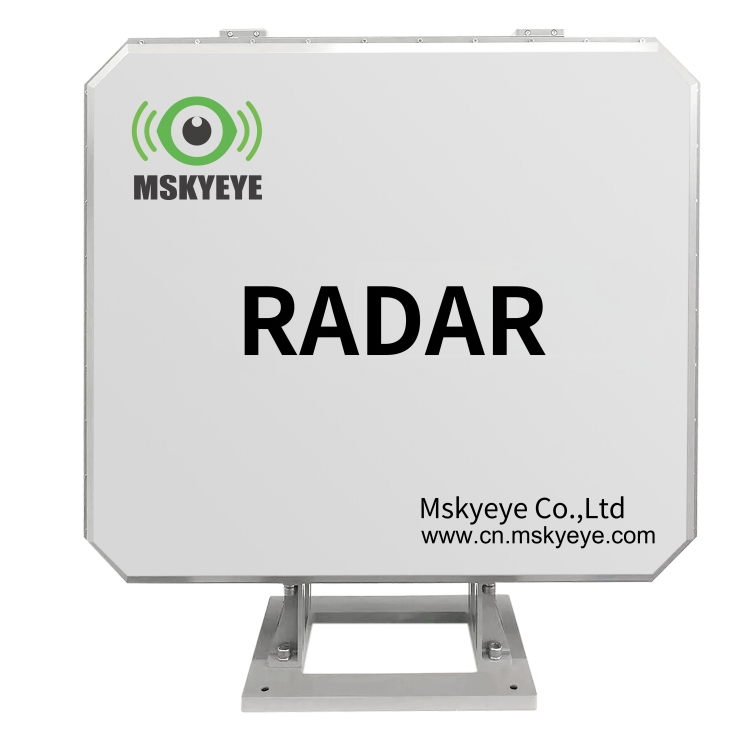The application of bird-detecting radar in wind farms is an important part of ecological protection and safe operation of wind farms. The core objective is to reduce the risk of collisions between birds and wind turbines by precisely monitoring bird activities, while also taking into account the power generation efficiency of wind farms. Its specific application scenarios, technical features and values are as follows:

I. Core Application Scenarios and Functions
Real-time monitoring and identification of bird activities
Bird-detection radars (mostly microwave radars, lidars or composite radar systems) can cover a range of several kilometers around wind farms and detect birds in real time:
Position, flight trajectory, altitude, speed, quantity;
Bird species (Some high-end radars combined with AI algorithms can identify key species such as migratory birds, raptors, and waterfowl);
Cluster activities (such as large-scale movement of migratory groups like geese, ducks and cranes).
Data is visualized through radar terminals or management platforms, providing wind farm managers with a global bird activity situation.
Collision risk warning and wind turbine linkage control
When the radar detects that birds have entered the dangerous airspace of the wind turbine (such as the rotation range of the wind turbine blades), or determines that their flight paths may collide with the wind turbine, the system will:
Automatically issue early warnings (sound and light alarms, platform push notifications, etc.);
The interlocking fan control system triggers responses based on risk levels (such as fan speed reduction, blade forward paddling, and brief shutdown), and resumes normal operation after the birds leave the dangerous area.
For instance, for raptors (which fly at high speed and have a high risk of collision), radar can detect them from hundreds of meters away and issue a warning 10 to 30 seconds in advance, leaving sufficient time for wind turbine adjustments.
Analysis of Bird Behavior and ecological research
Long-term accumulated bird activity data (such as migration routes, habitat preferences, and peak activity periods) can be used for:
Optimize the operation strategy of the wind turbine (such as adjusting the operation mode during the active period of birds);
Assist in the ecological assessment of the later expansion of the wind farm to avoid the addition of new wind turbines located in high-frequency bird channels.
Meet environmental protection regulatory requirements (some countries/regions' regulations mandate that wind farms be equipped with bird monitoring systems, such as the EU's Birds Directive).
Ii. Technical Characteristics of bird detection radar Adapted to wind farms
Coverage range: The coverage radius of a single radar in onshore wind farms is usually 1 to 5 kilometers. For offshore wind farms, due to the absence of terrain obstructions, the coverage radius can reach 5 to 10 kilometers. Multiple radars can be combined according to the area of the wind farm to form a network for monitoring.
Anti-interference capability: It needs to adapt to complex environments (such as strong winds, rain, fog, night, etc.) and reduce misjudgment of non-bird targets such as insects, fallen leaves, and drones.
Low-latency response: The delay from the detection of birds to the triggering of the fan response needs to be controlled within seconds (usually less than 10 seconds) to ensure there is sufficient time to avoid collisions.
Energy adaptation: Partially powered by solar energy, suitable for deployment in remote wind farms; Support integration with the existing SCADA system (Data Acquisition and Monitoring System) of the wind farm to achieve integrated management.
Iii. Application Value
Ecological protection: Significantly reduce the probability of birds (especially endangered and migratory species) colliding with wind turbines, assist wind farms in passing environmental protection acceptance, and meet the ecological sustainability requirements under the "dual carbon" goals.
Operational safety: Reduce damage to wind turbine blades caused by bird collisions (such as bird carcasses being drawn into the blades and causing malfunctions), and lower maintenance costs.
Compliance guarantee: Meet the regulatory requirements for ecological impact assessment of wind farms in countries/regions such as Europe, America, and China (such as the "Interim Measures for the Administration of Construction Land and Environmental Protection of Wind Farm Projects in China"), and prevent the project from being halted due to environmental protection issues.
Typical cases
Some offshore wind farms in Europe use a "radar + infrared camera" composite monitoring system to track migratory birds 24 hours a day. When the density of birds exceeds the threshold, the speed of the wind turbines is automatically controlled to decrease.
In conclusion, bird detection radar is a key technical means for wind farms to balance "clean energy production" and "ecological protection". With the improvement of environmental protection requirements, its application will gradually change from "optional" to "standard configuration".
Mskyeye radar have been exported to Germany and offer radar applications and solutions for wind farms. If you have any question, please contact us!

